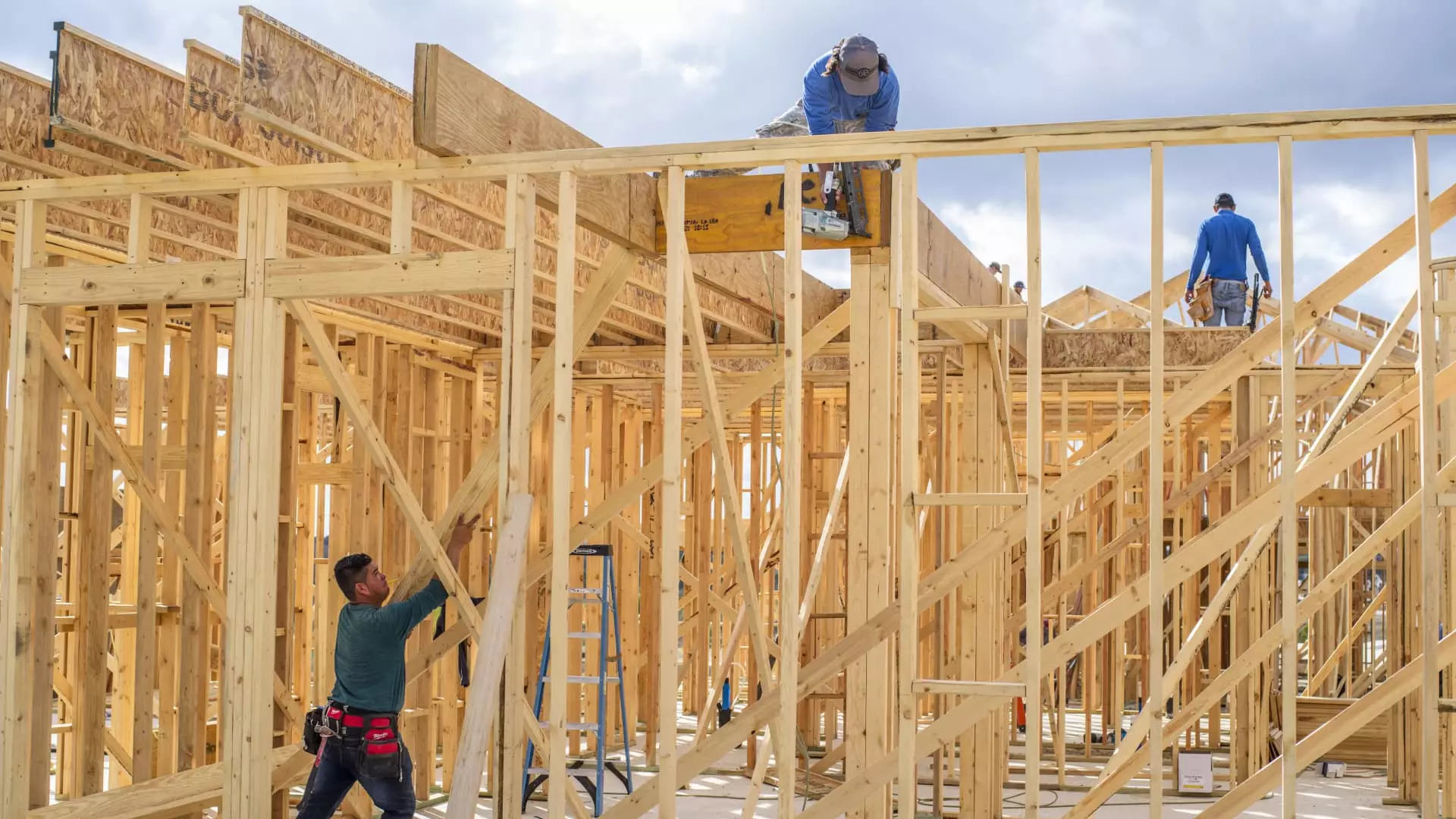The landscape of the U.S. homebuilding industry has seen significant changes recently, primarily shaped by fluctuating market conditions and external economic factors. As sentiment among single-family homebuilders has dipped to its lowest point in five months, the National Association of Home Builders (NAHB) has highlighted a variety of reasons behind this downturn. In February, the Housing Market Index (HMI) experienced a notable decline, reflective of a market grappling with increased costs, regulatory uncertainty, and changing buyer behavior.
The HMI fell sharply from January, recording a score of 42, which is indicative of negative sentiment as anything below 50 is classified as pessimistic. This downturn isn’t just a statistical anomaly; it represents a worrying trend for the sector. In February of the previous year, the index was slightly more optimistic at 48, suggesting that the sentiment surrounding homebuilding has stagnated or deteriorated over the past year. Carl Harris, the NAHB Chairman, has acknowledged this drop in sentiment and connected it to various external pressures, specifically the ambiguity surrounding policy changes and regulatory reform initiatives.
The HMI is comprised of three vital components: current sales conditions, buyer traffic, and future sales expectations. This month, each component reflected unease: current sales conditions fell to 46, buyer traffic decreased to 29, and anticipated sales for the next six months plummeted by 13 points to 46. This significant decline in future sales expectations signals a prevailing anxiety among builders about the viability of the market moving forward.
One of the critical issues affecting builder sentiment is the looming impact of tariffs on essential building materials. With an increasing reliance on imported goods—32% of appliances and 30% of softwood lumber sourced from abroad—builders are concerned about rising costs that could exacerbate housing affordability issues. The uncertainty over tariffs, initially set to take effect in early February but delayed by a month, continues to cloud the outlook for builders.
Compounding these cost concerns are rising mortgage rates. The average 30-year fixed mortgage rate surged above 7% in January and February, significantly straining the budgets of potential homebuyers. This rise follows a period when rates hovered in the 6% range, showcasing a stark change in the financing landscape that could also diminish the pool of prospective buyers. The synergy of these factors — increasing material costs and mortgage rates — represents a significant challenge to builders who are trying to manage expenses while meeting market demand.
As builder sentiment wanes, challenges related to buyer demand are becoming increasingly apparent. Central to this issue is affordability; potential buyers are finding it difficult to navigate the high costs associated with home purchases in the current climate. Ryan Marshall, CEO of PulteGroup, has noted that despite measures taken by the Federal Reserve to cut short-term interest rates, the overall interest on mortgages continues to limit buyer demand. As affordability remains a critical hurdle, builders are struggling with a shrinking pool of buyers.
Interestingly, while many builders had previously begun to offer price reductions or sales incentives, the share of those lowering prices has decreased to 26%, the lowest since May of the previous year. This trend indicates that traditional measures to attract buyers are becoming less effective, highlighting the reality that when buyers are completely priced out of the market, no amount of incentive will lead to sales.
In light of these dynamics, the homebuilding industry faces a crucial juncture. While there is hope for regulatory reform that could ease burdens on builders, the immediate landscape is fraught with challenges that require strategic adaptation. As costs rise and buyer demand fluctuates, homebuilders must navigate this challenging terrain thoughtfully to remain viable. The spring market, traditionally a pivotal time for home sales, presents both an opportunity and a challenge. Whether builders can rebound from this current sentiment dip largely depends on their ability to respond to economic pressures and effectively engage prospective buyers in an increasingly complex market. The future remains uncertain, but proactive strategies and responsiveness could help to shape a more favorable outlook for the industry.


Leave a Reply